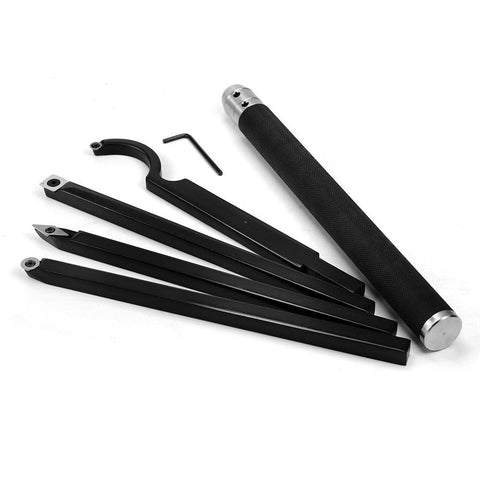Woodturning is a craft that blends artistry with precision, allowing woodworkers to create beautifully shaped objects with symmetry and style. Within woodturning, there are two primary techniques: spindle turning and faceplate turning. Each approach has its unique applications, tools, and methods, and understanding these differences helps woodturners select the appropriate technique for each project. Here's an in-depth look at these two types of woodturning and how they can be applied to create diverse, handcrafted pieces.
Spindle turning is perhaps the most recognizable form of woodturning, often used to craft long, symmetrical pieces like chair legs, table spindles, candlesticks, and tool handles. In spindle turning, the wood is mounted between the lathe's headstock and tailstock, where it spins along its long axis. This orientation makes it easier to work on narrow, elongated objects that require balance and symmetry.
One of the hallmarks of spindle turning is the ability to achieve detailed, complex patterns. Woodturners use chisels like the spindle roughing gouge, spindle gouge, and skew chisel to shape and carve these patterns, transitioning smoothly between beads, coves, and other ornamental features. Spindle turning techniques require careful control of the tools and an understanding of grain direction, as the wood's grain runs parallel to the lathe's axis, making it sensitive to different cutting angles. For beginners, spindle turning offers an ideal starting point, allowing them to develop skills in shaping and detailing with relative ease.
Aside from traditional furniture components, spindle turning is widely used in creating small, functional items such as handles for tools, rolling pins, and knitting needles. The technique provides the turner with a steady control over form, enabling the shaping of smooth curves, narrow points, and intricate designs that would be difficult to achieve otherwise. Spindle turning encourages a high level of precision and control, helping woodturners build skills they can carry over into other types of woodworking and design.
Faceplate turning, by contrast, is often used for creating broader, rounded shapes, such as bowls, platters, and decorative discs. In faceplate turning, the wood blank is attached to the lathe with a faceplate, chuck, or other similar mounting devices, allowing it to spin perpendicular to its axis. This orientation enables the turner to work on the full surface of the piece, shaping it from the center outwards.
The process of faceplate turning involves different techniques and tools compared to spindle turning, largely because the wood grain runs perpendicular to the lathe's axis. A bowl gouge, for example, is commonly used to hollow out and shape the inside of bowls and platters, while scrapers can help refine and smooth the surface. The tool approach angles in faceplate turning differ significantly, as the turner cuts across the grain rather than along it. This requires additional finesse and tool control, as cutting across the grain can lead to tear-out if not handled carefully.
Faceplate turning lends itself to creating functional and artistic pieces, with the lathe offering full access to both the interior and exterior of the work. This type of turning is more forgiving for larger projects, where symmetry and balance are critical but the precision required in spindle turning is less essential. Many turners enjoy faceplate turning for the freedom it allows in creating natural edge bowls, asymmetrical forms, and larger statement pieces with distinct, flowing lines.
While spindle turning and faceplate turning may seem like contrasting techniques, they often complement each other. A woodturner creating a large, decorative bowl might use faceplate turning to shape the main body and then switch to spindle turning to craft intricate details or handles for the piece. The combination of these techniques opens up an incredible range of creative possibilities, from finely detailed furniture parts to one-of-a-kind sculptural pieces.
Mastering both spindle and faceplate turning enables woodworkers to explore a wide array of projects and approaches, enriching their craftsmanship and artistry. Each technique requires specific skills, tool handling, and an understanding of grain behavior, and practicing these skills builds confidence, allowing turners to achieve greater control and refine their creations. By experimenting with spindle and faceplate turning, woodturners discover the versatility of the lathe and learn to transform raw wood into works of art that are as functional as they are beautiful.
